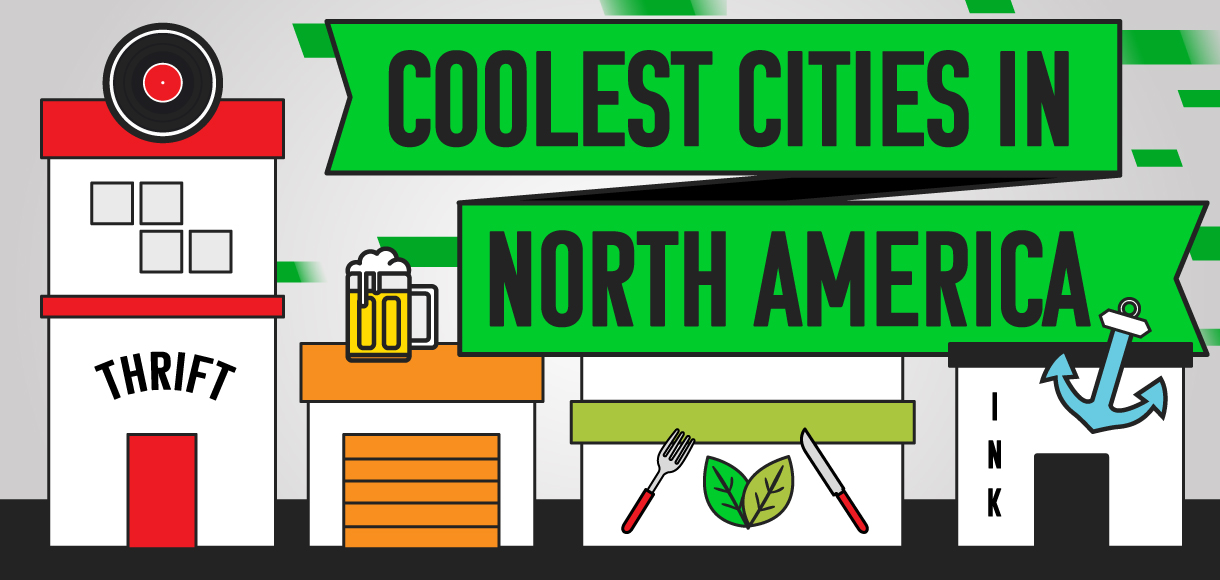Exploring 100 years of must-have Christmas gifts
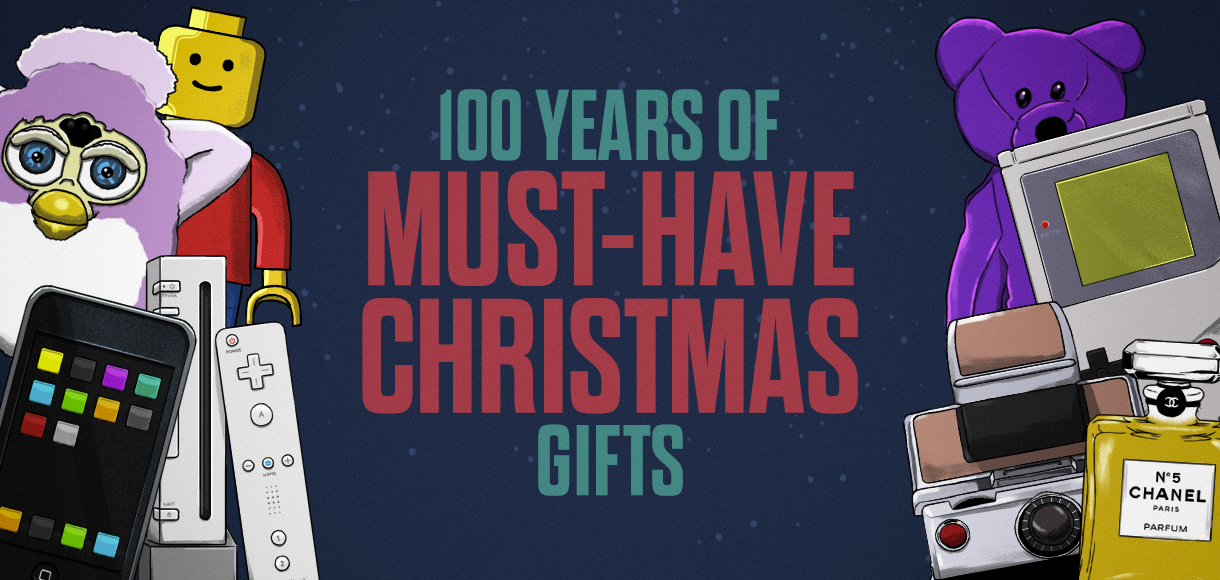
Every year there is one must-have gift that defines Christmas for many. We look back over the last century to find some of the biggest and best.
Christmas is a time for giving. Giving time to others, giving to charity and, of course, giving presents.
The latter involves a lot of shopping, and every year there is typically one product or item that is more in demand than others.
Whether it’s the latest gadget, toy, fragrance, or collectible, these Christmas gift crazes tend to dominate sales during the holiday period.
Thanks to research from online casino Betway, we look back on some of the biggest and best.
Christmas gifts through the decades
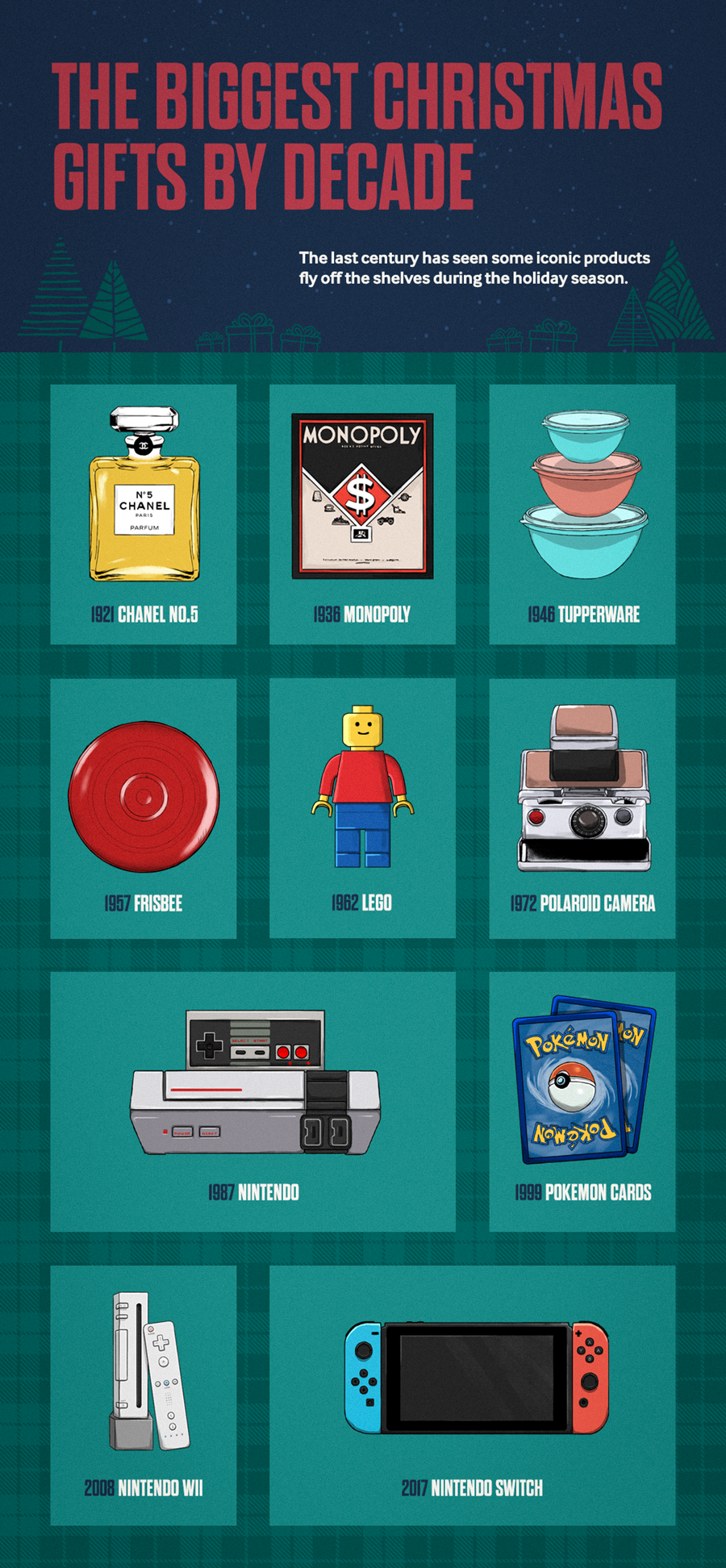
The first holiday trends came in the wake of the Great War, as the Roaring Twenties brought rapid industrial growth and widespread economic prosperity to the Western world.
With everyone having more time and money on their hands, the commercialisation of Christmas began.
In 1921, French fashion designer Gabrielle ‘Coco’ Chanel launched her flagship fragrance, Chanel No.5.
Thanks to a clever marketing campaign which emphasised the exclusivity of the perfume, Chanel No.5 gained a cult-like following and became one of the first Christmas gift crazes during the early 1920s.
Despite it now being nearly 100 years old, the fragrance remains a Christmas staple – Chanel run a dedicated advertising campaign every holiday season, with Marilyn Monroe, Nicole Kidman, Brad Pitt and Marion Cotillard all starring over the years.
The following decade brought another timeless Christmas classic as Monopoly hit the shelves in 1935.
With the world in the midst of the Great Depression, board games offered families cheap and endless fun, and Monopoly was an instant success.
The game sold 278,000 copies in its first year of production – many of those at Christmas – and 1.75m copies in 1936.
The first post-World War II holiday craze was not a toy, a perfume or a game, but Tupperware. Yes, Tupperware.
Those plastic food containers that are now a part of every kitchen first emerged in 1946, and quickly became a trendy product among women of the time.
Sales began to boom towards the end of the 40s, boosted by consistently strong performance at Christmas.
Tupperware was so successful that its creator, Earl Tupper, sold the company after just 12 years for $16m – equivalent to £110m today.
The biggest Christmas craze of the 1950s was considerably more exciting than Tupperware.
Flying discs had been sold under many names in the years prior – Flyin’ Saucers, Pluto Platters, Whirlo-Ways – but none stuck like Frisbee.
The unique name and an updated design saw Frisbees fly off the shelves following the change in January 1957.
By 1977, more than 100m Frisbees had found their way Christmas stockings, with that figure now above 300m.
The 1960s introduced Lego to the world, as the iconic building system began to sell outside of Scandinavia, with factories also being set up abroad.
Lego’s constant innovation has seen their products remain a Christmas staple to this day, with branded video games, films, books and board games continuing to entertain people all over the world.
The following decade, the 1970s, saw the beginning of a new trend in Christmas crazes.
The Polaroid SX-70 camera, the first to allow the average user to view their photos instantaneously, was released in 1972, and was a holiday hit upon nationwide release the following year.
Life magazine featured the invention on its cover in the run up to Christmas, and more than 700,000 units were sold by 1974, at a price point equivalent to nearly £700 today.
Crucially, Polaroid claimed that the SX-70 contained 20,000 technological innovations, a fact that captured the imagination and has come to define Christmas crazes in the years since.
The modern Christmas craze
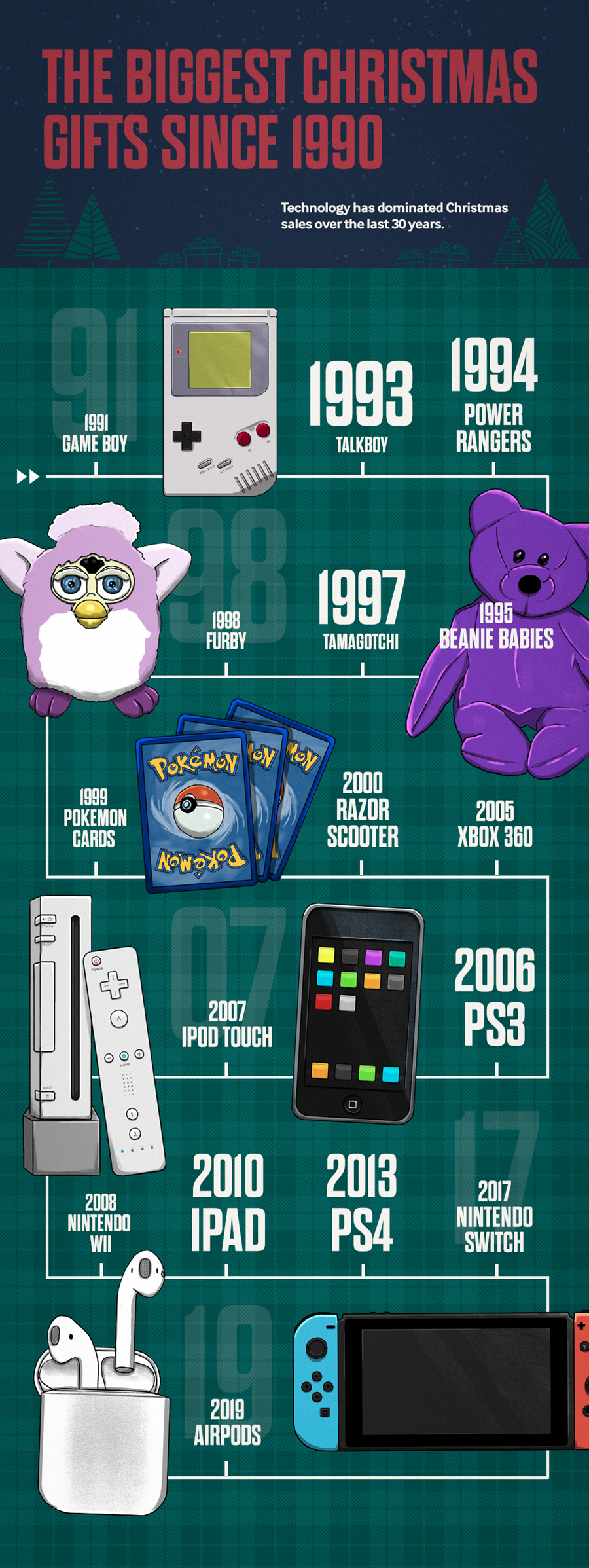
The world since the 1970s has, in many ways, been defined by the explosion of everyday technology, and Christmas is no different.
The Polaroid camera was one of the first pieces of consumer tech to reach the masses, and the decades that followed saw similar holiday trends.
In the mid-1980s, the Nintendo Entertainment System revolutionised the video game market and found its way onto millions of Christmas lists in the ensuing years, selling 7m consoles in 1988 alone.
Nintendo struck gold again in the 1990s with the Game Boy, which went on to become one of the most recognisable products of the decade, selling nearly 120m copies worldwide over its lifetime.
In fact, the Japanese electronics giant has been responsible for a number of recent Christmas crazes, with the Wii and Switch following in 2008 and 2017 respectively.
They even managed to dominate Christmas sales in the late 1990s with Pokemon cards, which were born out of one of their games.
During years in which Nintendo were quiet, other technology companies have dominated the Christmas market.
Microsoft got in on the act with the release of the Xbox 360 in 2005, with the console selling 1.4m units between release in November and the end of the year.
Sony followed with the PlayStation 3 in 2006 – selling 1.68m units that winter – before setting records with the PlayStation 4 in 2013, which sold more than 4m units over the Christmas period.
And how could we forget about Apple, who have been a fixture of Christmas lists for much of the 21st century so far, particularly with the iPod Touch in 2007, the iPad in 2010 and the AirPods in 2018.
Dotted around these feats of technological brilliance have been Christmas crazes of a more nostalgic nature.
Nineties kids will remember the Talkboy, a fictional gadget from Home Alone which was made reality for the Christmas season in 1993, with demand exceeding 2m.
Mighty Morphin’ Power Rangers figures were the must-have in 1994, with sales approaching £750m, while Beanie Babies hit the market in 1995, with their collectability causing havoc in stores across the world.
Sales of Tamagotchi, the virtual pets, exceeded £400m across the world at Christmas in 1997, while Furbies – those fluffy, robotic creatures that talked – sold 1.8m units in 1998.
How has Christmas spending been affected?
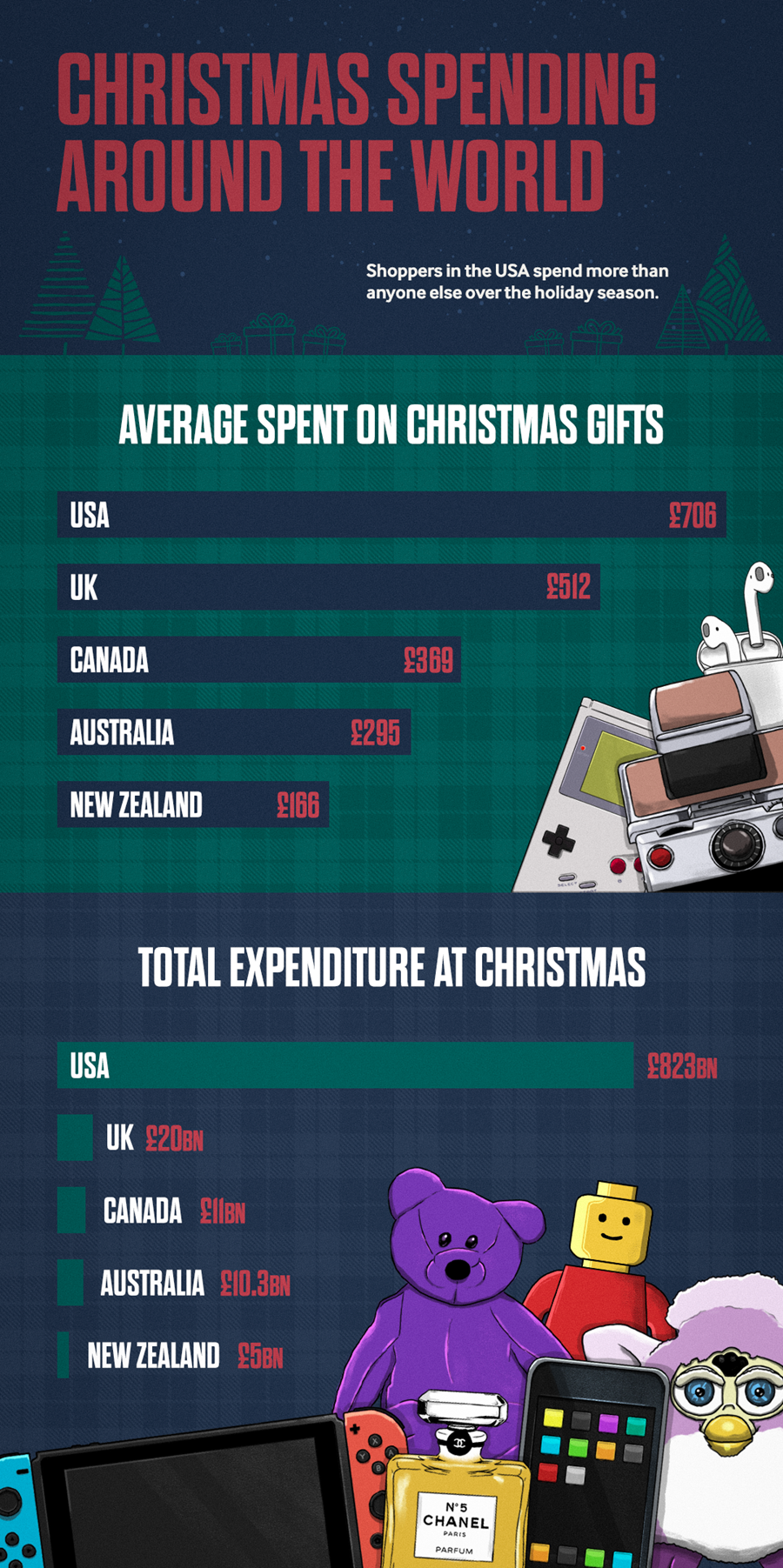
It’s clear to see that consumer electronics have dominated Christmas sales over the last 30 years or so, and that has inevitably made the holiday period more expensive.
New shopping events such as Black Friday and Cyber Monday are further driving up spending as consumers frenzy over the latest products.
Christmas spending in the UK has risen every year for the past nine years, while US shoppers spent over £800bn across the holiday season in 2019.
American shoppers tend to spend the most on Christmas gifts – many of which will be in-demand products – with an average outlay of £706 each year.
The average UK shopper will spend £512 on gifts each Christmas, with those in Canada, Australia and New Zealand spending £369, £295 and £166 respectively.
Although 2020 may see a dip in Christmas spending, with many people’s financial situation far less secure, the release of the PlayStation 5 and Xbox Series X demonstrates the continued impact of consumer technology on the holiday season.
Retailing for more than £400 each, both products have seen spectacular hype already, selling out across the world, and will figure highly in a lot of people’s Christmas plans.
Technological innovations are made every year, and bringing those to the masses at Christmas is a highly profitable operation.
It is unlikely, therefore, that any dip in Christmas spending this year will signal a period of decline.
After all, Christmas is a time for giving, and that will never change.












